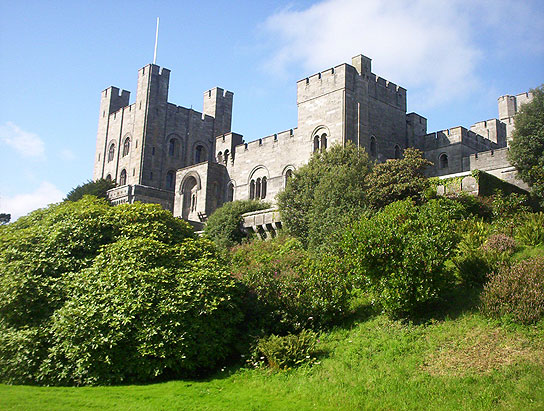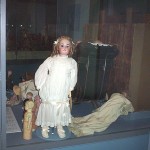
National Trust.
While there has been a building, fortified or otherwise, on the site for many centuries, the place was modified beyond recognition in 1820-1840 by Thomas Hopper, to create a mock Norman castle. The client was Hopper’s client was George Hay Dawkins-Pennant, who had inherited the Penrhyn estate on the death of his second cousin, Richard Pennant, who had made his fortune from Jamaican sugar and local slate quarries. Cost wasn’t a problem, and it is estimated that the house cost the equivalent of £49,000,000 in today’s money. The house is one of the most admired of the Victorian ‘mock castles’ and contains some jaw-dropping Norman-style interiors. In addition, hanging on its walls is one of the finest art collections in North Wales, with works by artists such as Rembrandt, Canalletto, Richard Wilson and Palma Vecchio.
Outside, there are extensive grounds, and in the courtyard area are several exhibitions, including full-size (not model) narrow gauge and standard gauge mineral railway shunting engines and rolling stock. There is also an interesting exhibition of dolls.
The house does have a notable resemblance to a Norman castle. Inside it’s a riot of carved decoration, all carved to a high standard. (One guide said that after going round one might want to lie down and look at something plain 🙂 ) It still has the original furnishings, often positioned by the NT in their 19-century positions. The Great Hall is the major show-piece, followed by the Library, and the Grand Staircase and other state rooms. The downstairs salons contain a quantity of paintings so valuable that even a lottery winner couldn’t afford to buy them. There’s also an accomodation tower, where the family mostly lived, and a warren of service rooms.
The kitchen and other rooms on the lower ground floor are part of the Grounds admission. The collection of full-size railway engines is unexpected but worth a look if you are a train buff. Presumably the nucleus of the collection came from the family slate mines. I didn’t explore the grounds on foot, as driving from the entrance to the car park and then walking up to the house was enough for me.
This is one of those locations where the sat-nav can lead you astray. Driving from nearby Bangor, the post-code took me to some unmarked gates, possibly the back entrance to the estate, while the visitor entrance was a mile or two further east.

